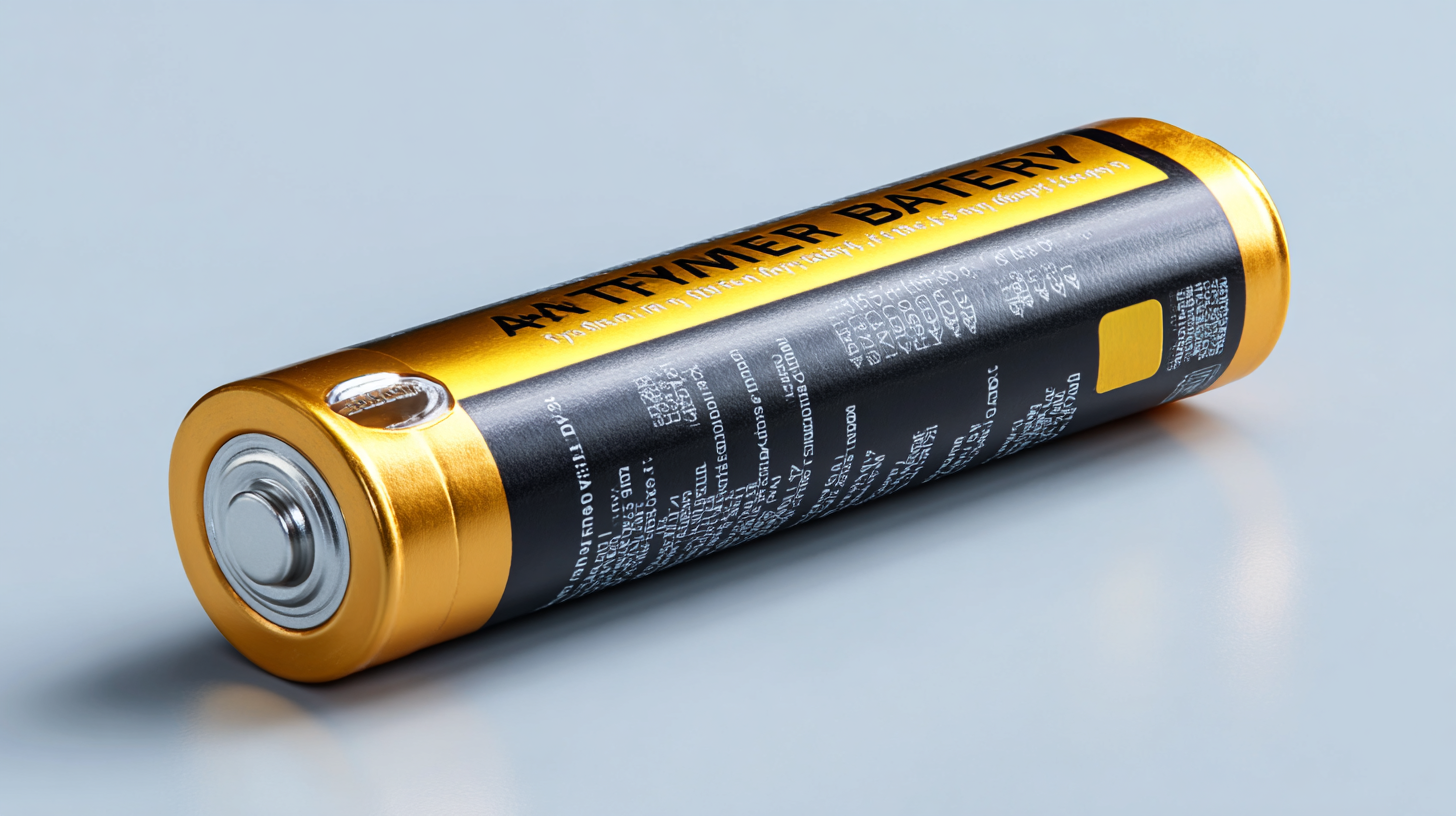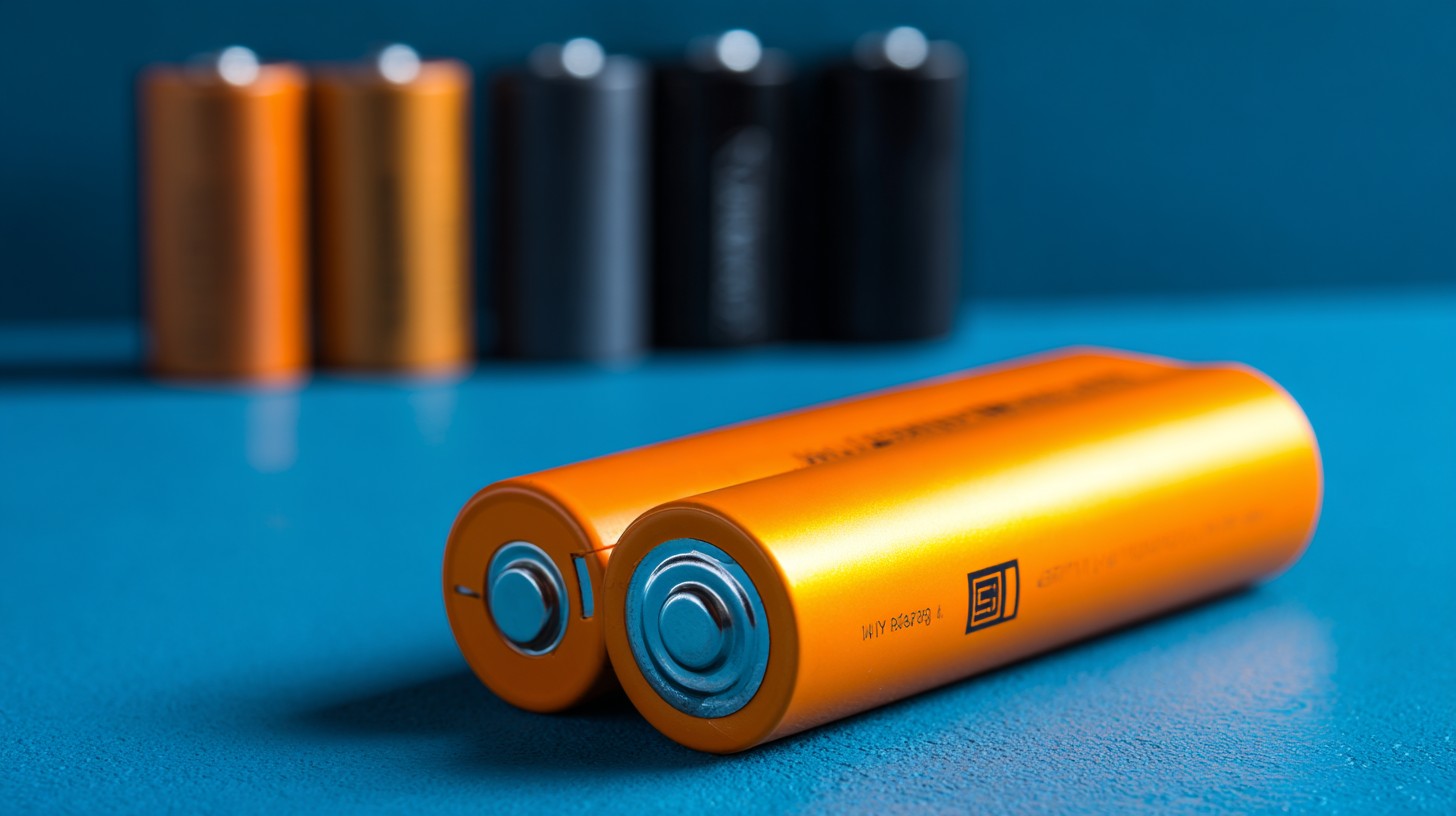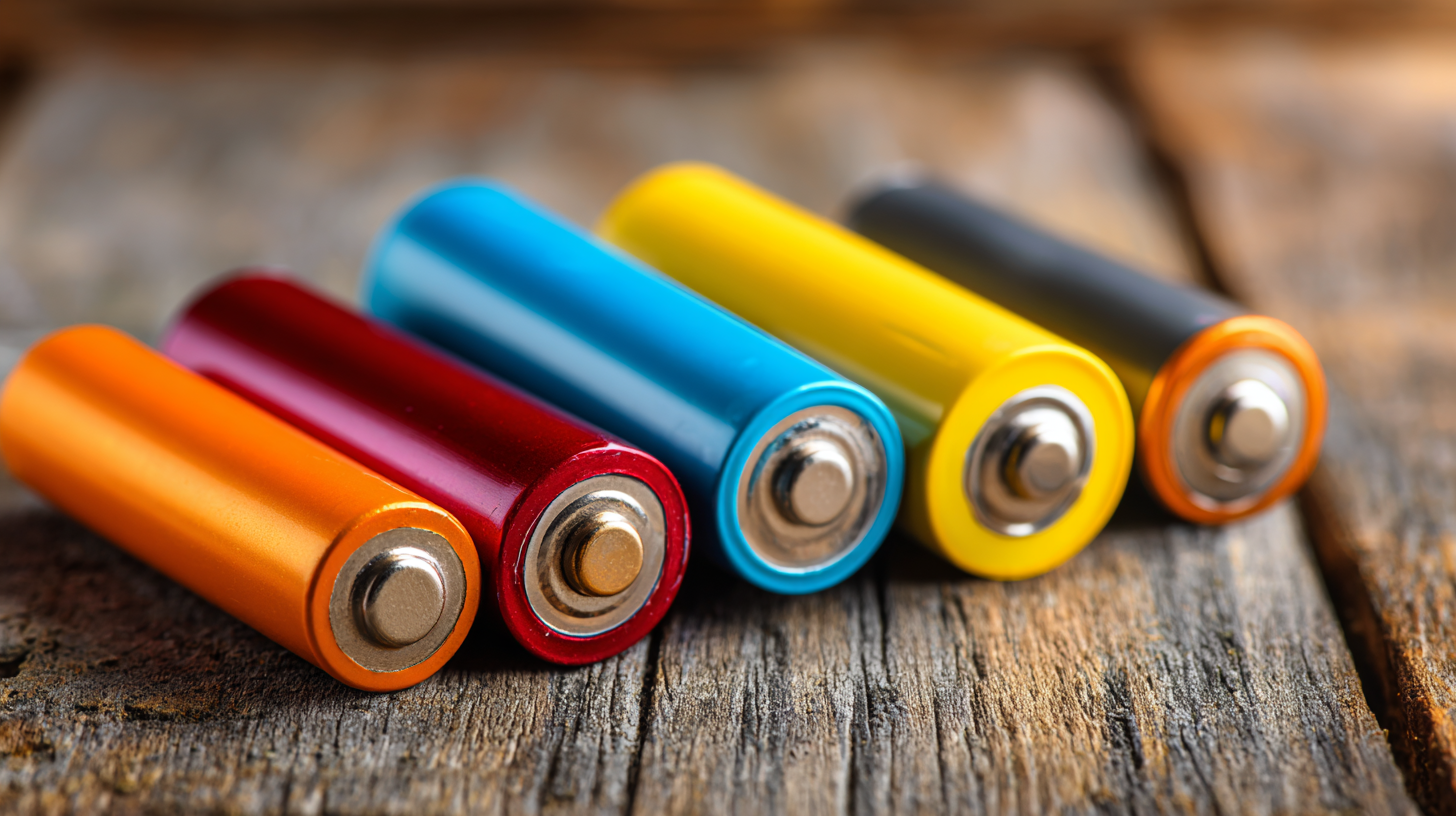Market Insights for Best aa Lithium Ion Battery in 2025 Proven Strategies to Maximize Your Purchase
As we look ahead to 2025, the market for AA lithium ion batteries is poised for significant growth, driven by increasing demand across various applications, including consumer electronics, electric vehicles, and renewable energy storage. According to a report by Grand View Research, the global lithium-ion battery market is expected to reach USD 129.3 billion by 2027, growing at a CAGR of 17.2%. This upward trajectory indicates the rising reliance on energy-efficient and portable power solutions. Moreover, advancements in battery technology and the ongoing shift towards sustainable practices are leading manufacturers to innovate and optimize their offerings. In this context, understanding market insights and employing proven strategies will be essential for maximizing your investment in AA lithium ion batteries. Whether you're a consumer or a business, leveraging data-driven tips can significantly enhance your purchasing decision and ensure that you stay ahead in this competitive landscape.

Understanding the Evolution of Lithium Ion Batteries and Market Trends for 2025
The evolution of lithium-ion batteries is a crucial topic as we approach 2025, especially given the rapid advancements in technology and changing market landscapes. As battery chemistry progresses, manufacturers are increasingly focusing on efficiency and sustainability, reshaping their material systems. One notable trend is the growing interest in sodium-ion batteries, presenting new opportunities and challenges within the industry. These innovations aim to enhance energy density and reduce costs, crucial for meeting the demands of electric vehicles and other applications.

To maximize your purchase in this competitive market, consider these tips: first, stay informed about emerging battery technologies and their implications for performance and pricing. Understanding the differences between lithium-ion and sodium-ion batteries can help you make better decisions, especially as prices for electric vehicle batteries are expected to drop significantly. Secondly, look for manufacturers that prioritize sustainability, as this not only benefits the environment but can also lead to long-term cost savings.
Finally, be aware of the evolving market trends and geopolitical factors that could influence supply chains. The lithium supply network is prone to dynamic risks that can impact pricing and availability. By keeping an eye on these developments, you can position yourself to make informed choices and take advantage of favorable market conditions as they arise.
Key Features to Look for in a High-Quality Lithium Ion Battery
When considering the purchase of a high-quality lithium-ion battery in 2025, it is crucial to focus on several key features that ensure optimal performance and longevity. As the demand for advanced energy storage technology continues to rise, industry leaders emphasize the importance of energy density, thermal stability, and cycle life. A recent report indicates that the global lithium-ion battery market is projected to grow significantly, driven by innovations in electric vehicle manufacturing and renewable energy applications.
Tips: Look for batteries with high energy density ratings, typically over 250 Wh/kg, as this ensures greater efficiency and range for electric vehicles. Additionally, ensure that thermal management systems are well-integrated, enhancing performance under various conditions. Lastly, consider batteries with extended cycle life—ideally over 1,500 charge cycles—to ensure reliability and lower long-term replacement costs.
Moreover, advancements in materials technology, such as the use of flexible structures and new electrolyte formulations, are pivotal in enhancing battery performance. Continuous research and development efforts are yielding promising results, particularly in understanding how to mitigate battery degradation. Monitoring advancements in battery technology through industry releases and academic publications will equip consumers with the knowledge to make informed purchasing decisions.
Market Insights for Best aa Lithium Ion Battery in 2025
| Feature | Importance | Recommended Value |
|---|---|---|
| Capacity (mAh) | Determines how long the battery can power a device | 2000 - 3000 mAh |
| Voltage (V) | Essential for compatibility with devices | 3.7 V |
| Cycle Life | Indicates longevity; more cycles means longer use | 500 - 1000 cycles |
| Weight (grams) | Affects portability and usability in devices | 40 - 50 g |
| Charge Time (hours) | Shorter charge times enhance user convenience | 2 - 4 hours |
| Temperature Range (°C) | Stability under diverse environmental conditions | -20 to 60 °C |
Comparative Analysis: Leading Brands and Their Offerings in 2025
As we look ahead to 2025, the landscape of lithium-ion batteries is rapidly evolving, driven by advancements in technology and the increasing demand for efficient energy storage solutions. In this comparative analysis, we delve into the offerings of leading brands that are shaping the future of this market. Prominent players such as Tesla, LG Chem, and Panasonic are vying for dominance, each presenting unique features that cater to different consumer needs—from energy density and longevity to cost-effectiveness.

In examining the specifications and capabilities of these brands, it becomes clear that Tesla’s battery technology is leading innovation with its focus on sustainability and performance. Meanwhile, LG Chem distinguishes itself with flexible manufacturing processes and competitive pricing, making it a strong contender for those seeking value in volume. Panasonic continues to impress with its engineering prowess, emphasizing safety and durability. Understanding these nuances in offerings empowers consumers to make informed decisions that align with their lifestyle requirements and budget constraints in 2025.
Proven Strategies for Negotiating the Best Deals on Lithium Ion Batteries
When it comes to purchasing lithium-ion batteries, negotiating the best deals can significantly impact your overall costs. First, it is essential to do thorough research on the market prices and available options. Understanding the specifications and performance of different brands will empower you during negotiations. Knowing the average price range helps establish a baseline for discussions, allowing you to identify when a seller is overcharging or offering a fair deal.
Another effective strategy is to leverage bulk buying options. Many suppliers offer discounts for larger orders, which can lead to substantial savings. Don't hesitate to discuss your purchasing needs explicitly with vendors; they may provide customized deals based on your requirements. Additionally, establishing a relationship with a supplier can open doors to better terms, such as extended warranties or lower shipping fees. By being proactive and informed, you position yourself to negotiate advantageous deals that meet your battery needs in 2025 and beyond.
Maximizing the Lifespan and Performance of Your Lithium Ion Battery Purchase
Maximizing the lifespan and performance of your lithium-ion battery purchase is crucial, especially as demand continues to surge in the electric vehicle (EV) market. Recent research indicates that EV batteries can last up to 40% longer than previously predicted, a significant finding that highlights the importance of managing battery health and operating conditions. To ensure your battery achieves peak performance, consider investing in advanced monitoring systems that track usage patterns and health metrics.
Tips for battery longevity include maintaining optimal temperature conditions, as excessive heat can degrade battery life. Additionally, regular updates on battery technology developments can help users stay informed about potential improvements in energy density and safety. The industry's focus on sustainability, including strategies for second-life battery applications, further emphasizes the need for responsible battery management practices. Employing recycling and repurposing strategies can not only reduce your carbon footprint but also optimize the economic and environmental value of retired batteries.
Furthermore, incorporating best practices in charging cycles can enhance battery lifespan significantly. Avoiding frequent deep discharges and using smart charging solutions that adjust the charging rate can help minimize wear on the battery. In a constantly evolving market, staying ahead of these strategies ensures that your investment in lithium-ion batteries yields the greatest returns in performance and longevity.
